So once I finally got the the staining stage, I decided to go with my original plan of doing a faux PRS-style binding. Taped off the area which would be left exposed as binding and then painted some clearcoat over the area with a brush to prevent the stain from bleeding.
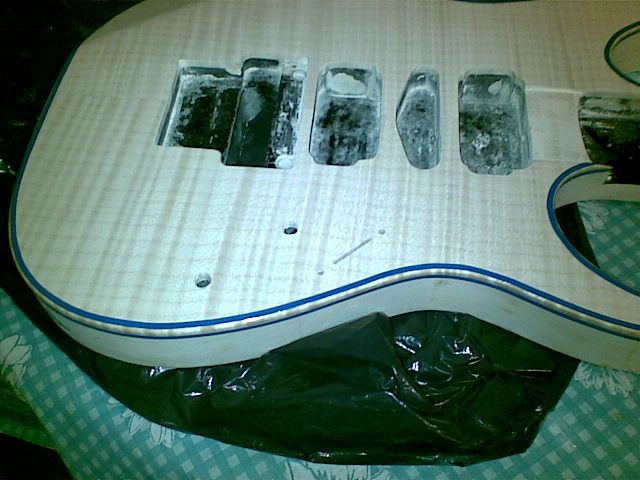
Once this had dried, I put some tape over the clear coat and proceeded to do the black stain which would be sanded back to make the grain "pop" nicely under the blue.
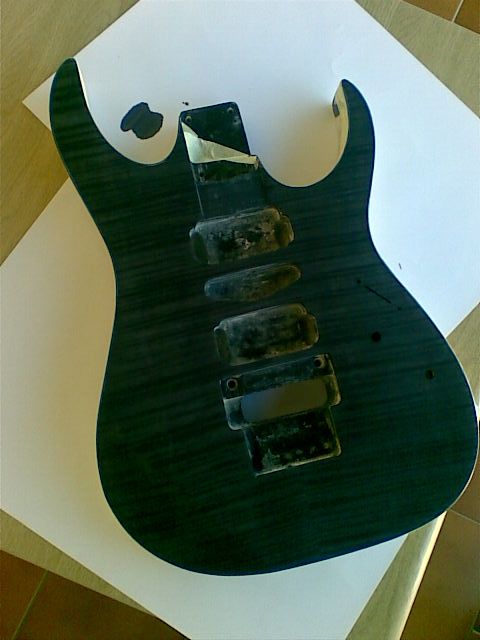
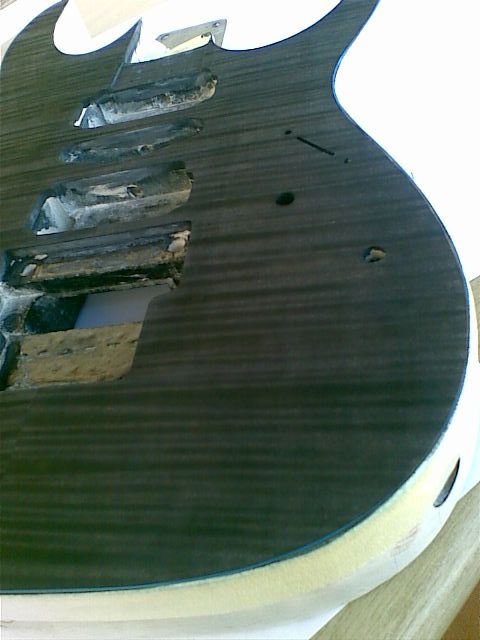
While waiting for this to dry, I decided to get started on the headstock. I'd spent a good few hours sanding the veneer down from 7mm to about 2mm as I felt that taking too much material off of the front of the headstock would be a bad idea since 1-piece maple wizard necks are often touch and go anyway due to their thinness.
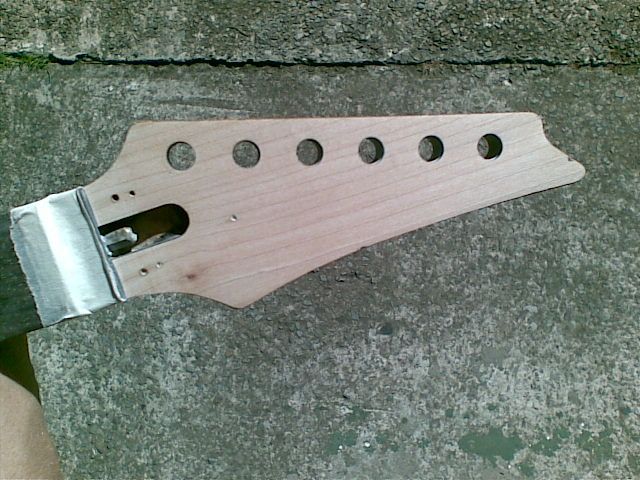
Front of the headstock sanded and ready for the veneer.
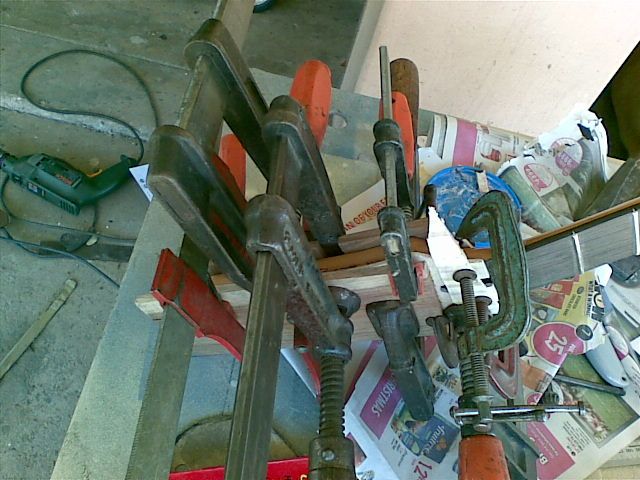
More clamps than you can shake an original Wizard neck at ?
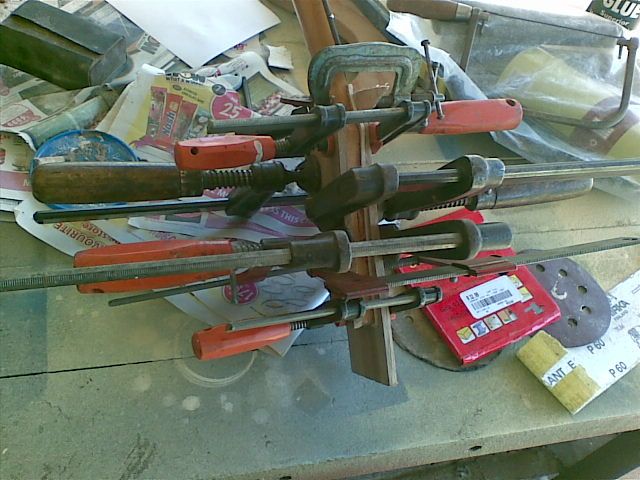
While waiting for the glue to dry, I drilled out the old side dot inlays which were falling out (some were pushed in and looked really crappy) and replace them with new ones. Again, no nice "after pic" but you will see later on how it came out anyway ?
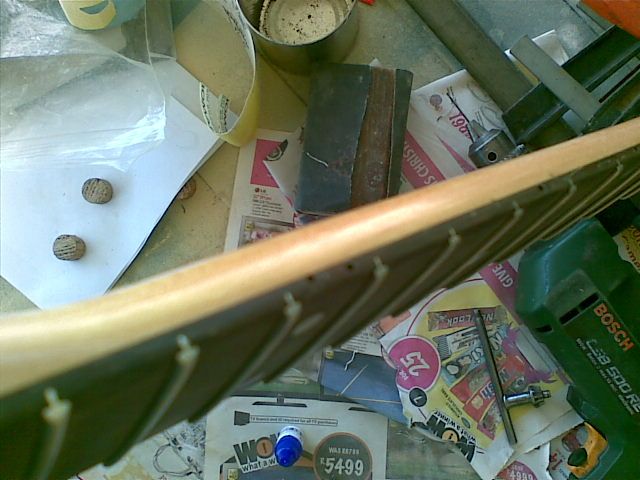
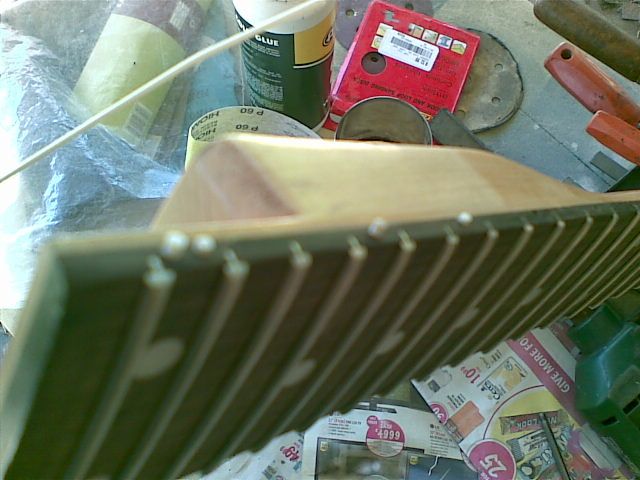
And here's the headstock veneer, complete with dried wood glue:
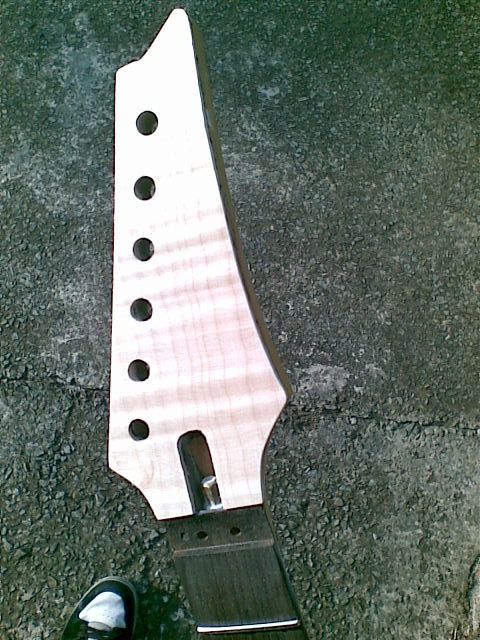
After sanding, I did the binding trick for the headstock as well and then stained it black. In the meantime, it was time to sand the black stain back on the body:

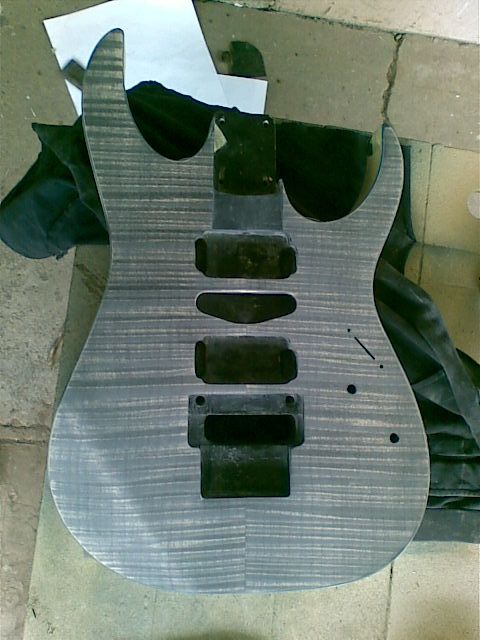
Here is a close-up of that dreaded crack; not nearly as noticeable as before!

And the book-end seam:

Don't they make a cute couple? Ready for the blue stain (this was the really exciting part!)
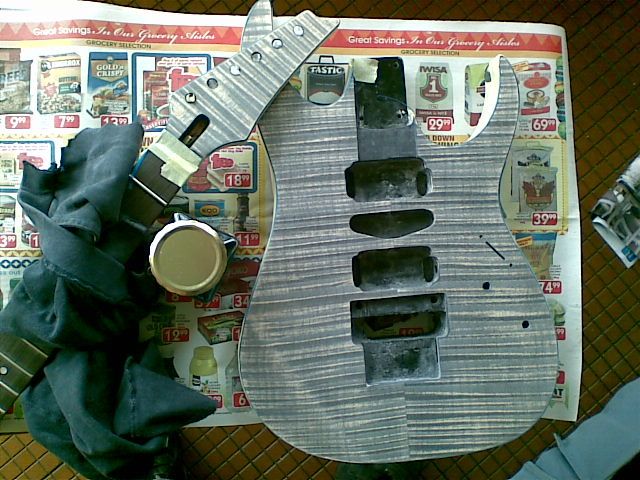
Body and headstock stained the final blue. It came out 10 times better than I'd even hoped!
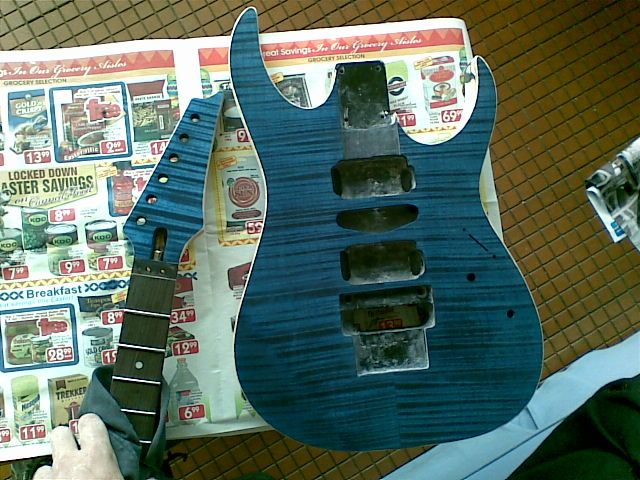
Check out the figure!!
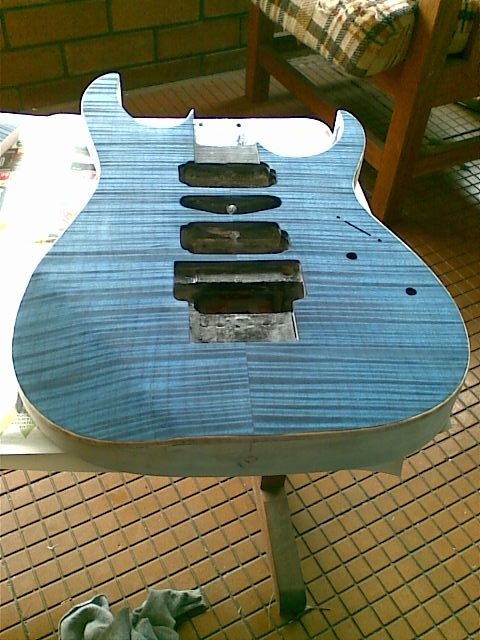
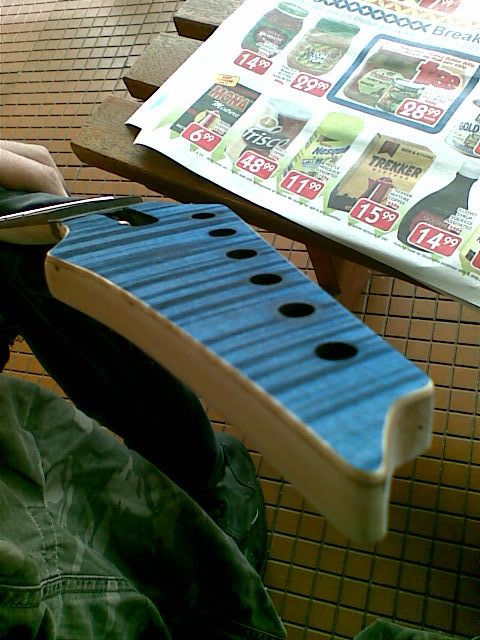
Next up is the clear coat but it might be a little while before this is done since my dad will be helping me out and he has been hellishly busy, so I guess patience it is then. In the meantime, I have been cleaning up the "binding" and refinishing the neck with Tru-Oil. Unfortunately, while staining the neck I had some stain bleeding under the masking tape onto the top shoulder of the headstock. Tried sanding it out but wasn't very successful so there is a bit of a blue mark on the maple neck ☹ I had the same problem with the holes I'd drilled for the tuners; I didn't mask them off properly and some of the stain leaked through onto the area where the tuners go but I managed to get the bulk of this sanded out and also the tuners will be covering the worst of it, thankfully.
Anyhoo, thanks for reading, I will update once again once I've finally done the clearcoat, let it cure, sanded, polished and reassembled the axe...CAN'T FREAKIN' WAIT!!!!
Until then... ?